Opinion of 4 people resurrecting independent print media.
Without a keyword
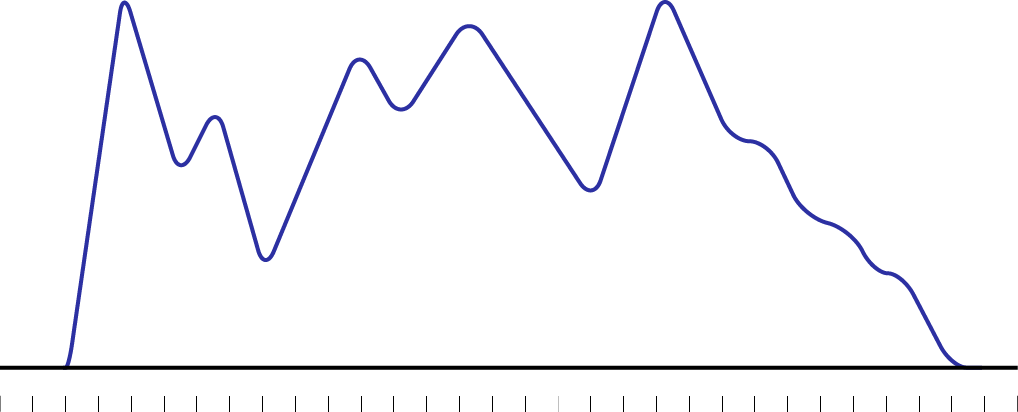
And really, who needs magazines today? Any information in seconds can be found on the Internet, and for free. You can’t find a unique look at something in them either, the entire commercial women’s gloss today looks like a large homogeneous catalog of advertiser support. It is not surprising that circulations are falling, and budgets go to more promising segments. But by some miracle, on the ashes of languidly smoldering mainstream magazines, new small publications appear every now and then.
Independent magazines are rarely launched with the goal of making a lot of money. Usually they are made by people who have something to say and who clearly know in what form they want to do it. They cost more than their more commercial counterparts, they come out in a small circulation, they choose a narrower topic or look at familiar things from a new angle. It would seem, who needs it. Why spend a lot of money on expensive paper, printing, logistics, storage and distribution when almost any content can be presented on the Internet.
Independent magazines are rarely launched with the goal of making a lot of money. Usually they are made by people who have something to say and who clearly know in what form they want to do it. They cost more than their more commercial counterparts, they come out in a small circulation, they choose a narrower topic or look at familiar things from a new angle. It would seem, who needs it. Why spend a lot of money on expensive paper, printing, logistics, storage and distribution when almost any content can be presented on the Internet.
But not everything is so simple, recently the number of people striving for conscious consumption has been steadily growing. They won't go to the nearest fast food place when they feel hungry, when they can wait a couple of hours and dine in a good restaurant or cook delicious food at home. They will not impulsively buy a coat for the season in some mass market, but will prefer to save for well-tailored cashmere. To the consumption of information, and now there is more than ever, these people are also conscious, choosing only those publications whose vision, subject or curatorial work are close to them. Reading a magazine is a special ritual for them, someone has a tradition to start Sunday with a cool breakfast while watching their favorite publication, others save up new issues for a long flight. This is a new generation of people for whom luxury is not a bag with a loud logo, they value their time and vivid impressions more. And the magazine, which is not a pity to spend one's time on, becomes one of the most accessible forms of new luxury.
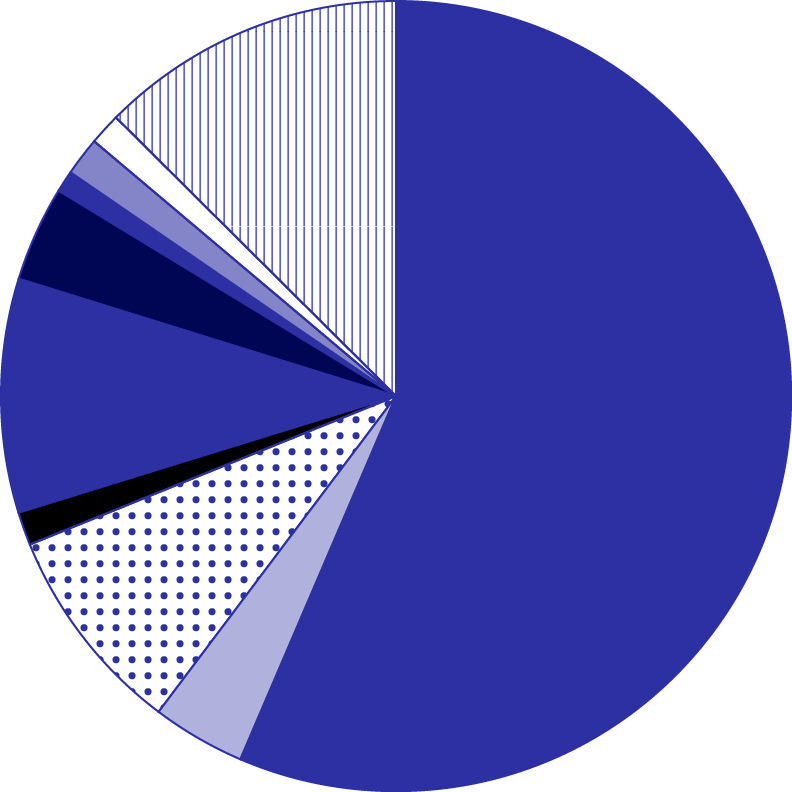

But not everything is so simple, recently the number of people striving for conscious consumption has been steadily growing. They won't go to the nearest fast food place when they feel hungry, when they can wait a couple of hours and dine in a good restaurant or cook delicious food at home.They will not impulsively buy a coat for a season in some mass market, but prefer to put off on a well-tailored cashmere. To the consumption of information, and now there are a lot of it, more than ever, these people are also consciously, choosing only those editions, vision, theme or curatorial work of which are close to them. Reading the magazine for them is a special ritual, someone has a tradition to start Sunday with a cool breakfast for watching their beloved publication, others save new numbers for a long air travel. This is a new generation of people for whom luxury is not a bag with a loud logo, they value their time and vivid impressions more. And the magazine, on which it is not a pity to spend its time, becomes one of the most affordable forms of new luxury.
A crisis is always a time of growth and transformations. It cannot be denied that he will forever change the magazine industry, affect its sizes and scale of revenue, and even kill some of his favorite publications, but at the same time he gives rise to a new generation of people who, instead of complaining of a difficult fate, come up with creative exits from The current situation, new interesting formats of interaction with advertisers and make products that not only survive, but also flourish despite the prevailing pessimism.
They offer not just a set of pages, a strip of advertising or a banal kiosk. They sell their point of view, lifestyle, create a community of like -minded people and never compromise. We talked with four professionals who build an industrial industry industry according to the new rules: the founder of the magazine, a niche advertising agent, the distributor of indie publications and the founder of one of the best magazine concepts. And they realized that in fact everything is not so bad.
A crisis is always a time of growth and transformations. It cannot be denied that he will forever change the magazine industry, affect its sizes and scale of revenue, and even kill some of his favorite publications, but at the same time he gives rise to a new generation of people who, instead of complaining of a difficult fate, come up with creative exits from The current situation, new interesting formats of interaction with advertisers and make products that not only survive, but also flourish despite the prevailing pessimism.


They offer not just a set of pages, a strip of advertising or a banal kiosk. They sell their point of view, lifestyle, create a community of like -minded people and never compromise. We talked with four professionals who build an industrial industry industry according to the new rules: the founder of the magazine, a niche advertising agent, the distributor of indie publications and the founder of one of the best magazine concepts. And they realized that in fact everything is not so bad.
Special material in four issues:
ADVERTISING AND COMMERCIAL PROJECTS
Special material in four editions:




Advertising and commercial projects
Magazine shop. 0fr, Paris.
Maria Zhudina-Robinson is the founder of Puss Puss magazine. The magazine is now preparing its fourth issue and is sold in more than 20 countries.
Maria Zhudina-Robinson is the founder of Puss Puss magazine. The magazine is now preparing its fourth issue and is sold in more than 20 countries.
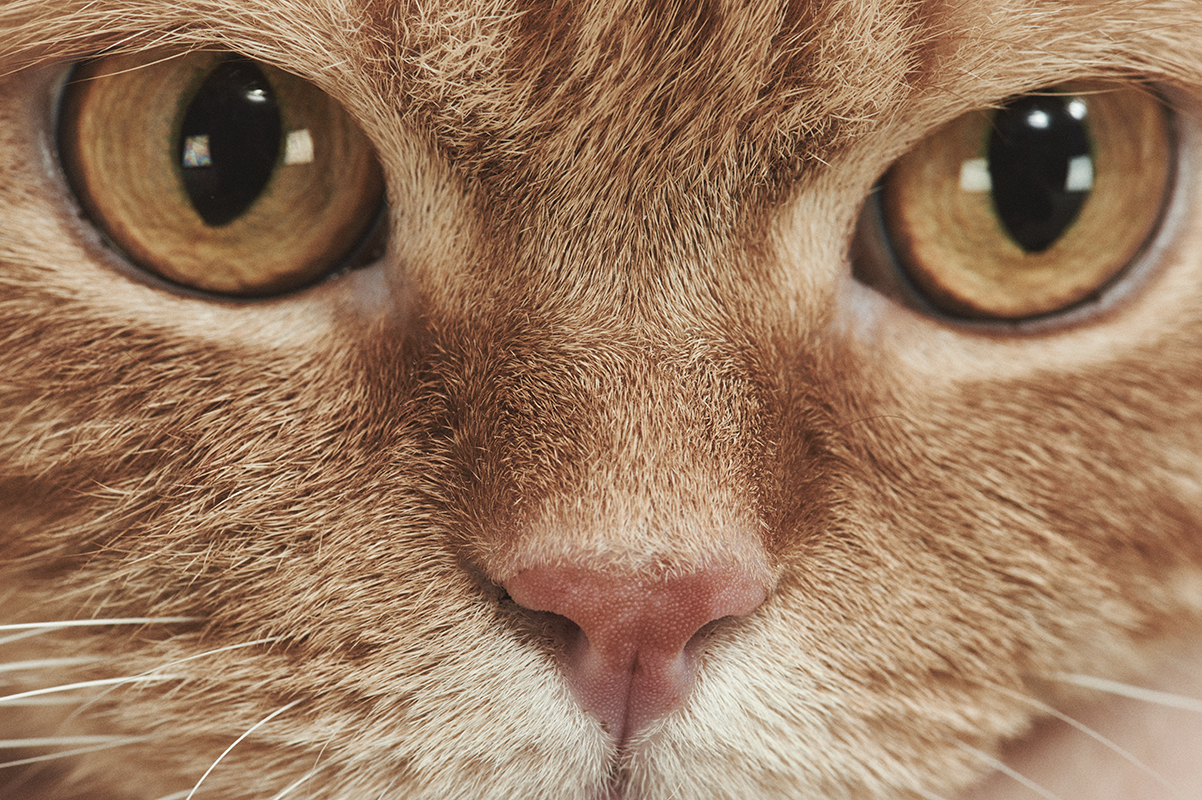
Tell us how you decided to start your magazine.
I love magazines. And cats. And it seemed to me that there was a place on the bookshelf for a publication that would write about fashion, culture, social phenomena – and yes, cats. But! Without vulgarity and flirting. This is not a magazine for crazy aunts with 20 cats. When I shared my plans with my friends, everyone exclaimed: “Great idea! You definitely need to do it.
Now everything is going to niche, and the fashion niche in tandem with cats was just free.
To some extent, yes. I wouldn't do another fashion magazine.
And why did you decide to make a printed publication, while everyone goes online – after all, making a website is not so expensive.
Print is my love. I have been designing and art-directing for many years. She worked in various commercial projects related to fashion and luxury, was the art director of Burberry. During this time, I learned a lot about different types of paper and how things should be printed. My clients appreciate my attention to detail. I approach the work on the magazine with the same seriousness. We are very sensitive to the quality of printing and the choice of paper, we think about every detail. Everything must be perfect. I don't want the magazine to be bought and thrown away. It is important for me that people want to put them on the shelf, collect them from them. Plus the photographers we work with prefer print. People love what they can hold in their hands.
That is, there is no rational approach here. It's about love.
Yes, this is such a passion project. We are printed in England, which is expensive.
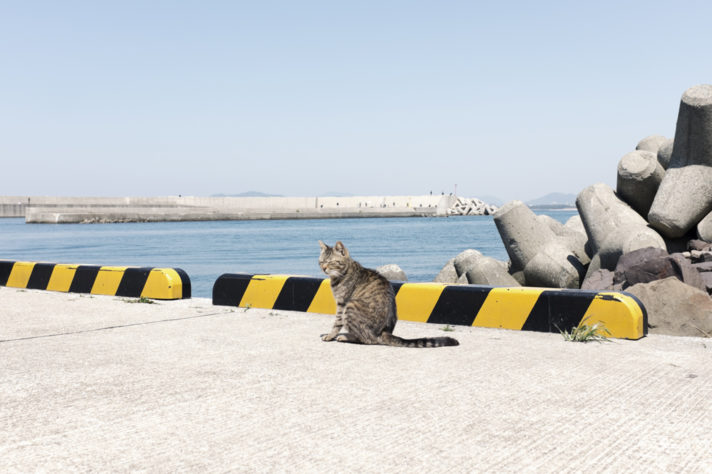
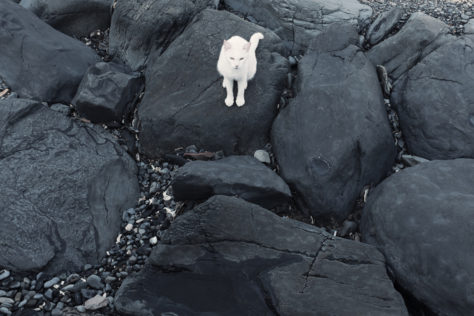
Which immediately prompts the question: where did you get the money for the first number?
We made the first number with our own money. Now the magazine is already starting to pay off.
And how did you manage to attract such large-scale heroes to participate in an unknown, even non-existing magazine?
From the very beginning, I understood that the first issue of the magazine should be done with someone serious, so that there was no feeling that we were talking about superficial things. The dream hero was Ai Weiwei. The rest is a combination of hard work, hanging out with a bunch of people, and luck. We started looking for Ai Weiwei's contacts through acquaintances. So it turned out that my friend's neighbor is about to interview him and can give us his contact. There was no magazine then, so we just sent him our ideas and sketches. He did not answer once, did not answer twice, and on the third letter came the answer: “I really liked your idea. When can you come?
This was the period when Ai Weiwei was not allowed to travel abroad, and we flew to China with a journalist and a photographer.We spent time with him and his cats, took pictures.
A similar story was with Chloe Sevigny, the heroine of the latest issue of Puss Puss. We have written to her several times to no avail. And then one day I found in my mail a letter from her PR man with the words: “Good afternoon. Chloe loves your magazine. Let's do something together. Such miracles also happen.
So it's just luck and hard work.
The secret is not to try to get through to celebrities only through their press services – you need to look for direct contacts. After all, if a person like Ai Weiwei likes your idea and decides to trust you, he will easily say: “Okay, guys, come.”

It takes time and hands to write to everyone. Tell us how you managed to assemble a team for the first number.
They were just friends or colleagues whom I know well and who liked the idea. Everything worked out very organically for us. There was no big planning.
But what about the grid, content mix, rubricator.
Everything worked out by itself. I wanted to talk about nature, lifestyle, fashion, art, and we simply selected materials by topic. All members of the team that worked on the first issue lived in London. We just met, discussed … I had a feeling that we are doing everything right, since everything turns out by itself.
I listen to you and I get the impression that making a magazine is easy, and I know it's not.
Oh no, what are you, it was not easy at all. But I look at it this way: I invest a lot of effort and energy, and then it all comes back. Just not always from where you expect. You knock on the same door, to some celebrity you want to work with, and nothing. For example, we dreamed of getting Nobuyoshi Araki. Two years ago, I wrote them a bunch of unanswered letters. And two months ago they themselves wrote to me. “We remember that you contacted us two years ago. Then nothing happened, but maybe you want to return to the idea of cooperation?” I really believe that the forces, the energy that you direct in some direction, sooner or later will return to you. And even if it sounds easy, it is actually the result of hard work and incessant knocking on different doors. But sometimes, instead of beating on a closed door, it's better to go with the flow.
This is all great, but there are technical issues. How did you organize the printing?
This was the easiest. I have been living in London for a long time, I work in the industry, I know printing houses, I have connections and friends. So one of the girls I share an office with is the creative director of Repost magazine. We are constantly exchanging experience, where what is better and cheaper. Our print shop had a very good price, and it's close to London, which is important to me because I want to be in control of every aspect of printing. You can perfectly collect everything, make up, retouch a photo, but if your printing house does not understand what to do, the result will be disgusting.So I go to the press, I say to reduce two percent yellow, and these guys look at me like I'm crazy.
The philosophy of the journal is to respect the work of contributors. And if the photographer shoots for us, I want him to be happy with the end result and think, “Oh, what a cool paper, what a cool print, what a good quality.” To make him feel that his work is respected.
And then again the question of finances arises. Good printing costs money. Forgive me for being immodest, what do you live on? Selling ads?
We sell ads, yes, but most of our earnings so far come from magazine sales. We sell it online – plus we have international distribution. Most sales in America and Australia.
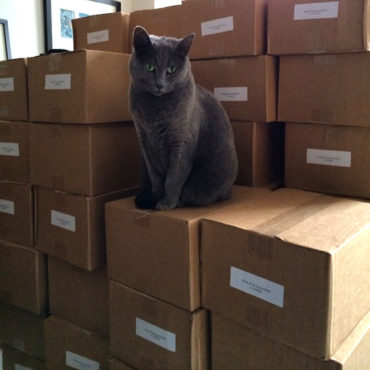
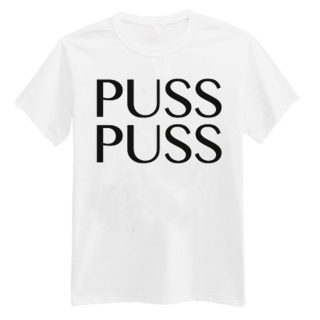

Most of it comes from sales? I ask because sales do not play a role in mass magazines.
Well we live on it, yes. We do not earn millions, but we can continue to do what we love.
How did you achieve such a wide distribution?
We have a good distributor in Europe and England – this is Antenna Books. They deal with almost all the cool boutique publications. And in America and other countries, Export Press handles our distribution. They are more about mass reach. They put us in Barnes and Noble.
Do you think that both are important? Sell, say, at the airport and in the most niche stores?
Certainly. For reputation, we sell in Colette and Garage, but at the same time we need coverage.

Do you sell advertising yourself or is there a special person?
Yes, we have a person. He has his own agency that works with niche magazines. It is very difficult, especially with big brands. It all depends on what kind of person you are talking to, whether they like what you say or not.
That is, the human factor is very important.
Absolutely. If we work with some brand, and the person with whom we communicated left, we have to start all over again, telling that we know what we can do, what we do, what great people we work with, what a good team we have. It is very important to have a personal contact.
It seems that it is important here to declare yourself loudly. When you knock on doors, you hope that they have at least heard about you. Did you do any PR when you launched?
We did a launch party at the Ace Hotel. We sent hundreds of letters to newspapers, magazines, through friends, through acquaintances. Many wrote about us, we were in Vogue, Elle, and even The Financial Times. So there was a lot of knocking – and some doors immediately opened. But I try not to do it myself. For me, the editorial direction, creative direction is more important. And on the fourth issue, thank God, there are already people who are engaged in PR, and I can do what I can.
Great. Tell me, was number two harder or easier than number one?
The first, of course, is always more difficult. When you do the first number, there is still nothing that you can show people. They don't trust you yet. But when they see the product and begin to trust, they can say: “OK, we like what you do. Hold Prada, Miu Miu. Shoot and generally do what you want.
How many people do you have in the team now?
I'll count it right now. We have many contributors. But there are about five people who write or remove something to each number.
At the same time, do they have another job?
Oh sure. We are not yet the scale that we can provide all people with a permanent salary. I also have another job-customers for whom I do Art-Direction.
![]()
![]()
![]()
What are your plans for the future? In what direction will all this move?
I would like to release more numbers, increase the bar. It seems to me that we are very organically developing. In the next issue, we will have a cool Guest Fashion Editor. She lives in New York, she has a lot of connections. But the main thing is that we have the same taste. Its appearance is very useful, since I recently had a child, and so there is a person who will take most of the planning and Production.
They say a lot about the fact that print publications die. What do you think about this?
Well, I don’t remember when I last bought Vogue or Elle. If I need to see new collections, I will do it on the Internet. I do not see the point of buying mass magazines. I buy magazines in which there is something special: I-D, Gentlewoman, Pop. You buy them as an object, as a source of inspiration – and keep them. It is simply nice to hold it in his hands. This is exactly what we try to do with our magazine too. You know, when you get up on Saturday, pour coffee and open the magazine. You make a special case out of this, and not just bought Grazia, read it and threw it at the airport.
The only thing that complicates life in the print is advertising budgets. They are constantly reduced. If something kills the print, it is that everything will become too expensive. But while there are magazines such as Gentlewoman, I-D and we are small, then the print will still live. People love something so physical that you can touch-sniff. For example, vinyl also exists, although everyone is listening to Spotify. It will be more difficult to do, because it is expensive, but it will not disappear anywhere.
Do you believe that an independent small magazine can be commercially successful? I would like to hope that this is possible.
I hope so too. For example, we can exist at the expense of sales, and it is very cool, but, of course, I want to find the opportunity to somehow earn it humanly in order to have some freedom and normal budgets and not to think constantly about the ability to spend extra 500 pounds on This or that material. I think such magazines like us just need to think non -standard and expand the sphere of what we can offer the same advertisers and sponsors. Buying a page of advertising is no longer interested in anyone. Everyone wants collaborations, special filming, joint events and so on.
We need a creative approach. When the advertiser from Harper’s Bazaar comes and says: “We sell half a million rooms, we all open in front of us,” of course, many will give him advertising. And when your main advantage is not quantity, but quality, approach should be completely different.
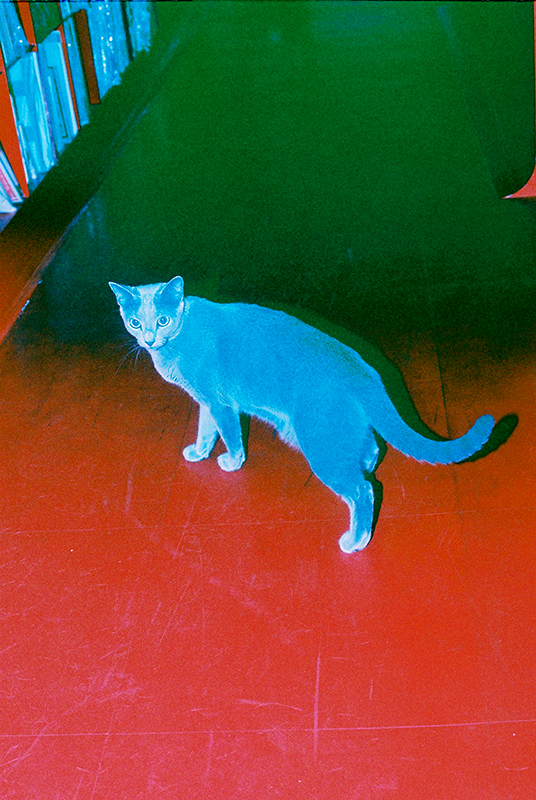
Advertising and commercial projects


Advertising and commercial projects
Fabio Montobbio is the founder of the Rock Media agency, which is engaged in the sale of advertising and special projects for magazines such as Love, Fantastic Man, Gentlewoman and Hercules.
Tell me how you came to this industry.
Everything is simple. When you live in Milan, fashion is one of the most interesting industries in which you can work.
And why exactly the sale of advertising for independent publications? Nowadays, it seems almost a minefield. Why didn’t you just go to any major company like Condé Nast?
In general, the sale of advertising is probably the most terrible position in the publishing business, except when you work with the most cool, inventive magazines. When you offer people not what they are used to, but something new and interesting, boring, at first glance, work turns into a fascinating creative process not only from editorial, but also from business worship. Therefore, I opened the Rock Media agency, which works only with independent magazines. My work is much more fun than if I worked for the benefit of a large corporation. She gives me the opportunity to communicate with unique people, learn to understand them and broadcast their vision to brands.
Why, in your opinion, brands willingly give advertisements to independent publications, despite the fact that they have small circulations, the logos are not so recognizable, and indeed things do not go very well.
Today, more than ever, brands need a fresh look at their product and those who make high-quality, original content for them. Thanks to the creative and in some cases, they can get some bright, innovative ideas that will help them reveal and tell their story in a new way. Great stylists, editors, and fashion directors work over many independent magazines. It happens that their vision is so different from the usual brand that its leadership has to leave their comfort zone. Sometimes it even pushes them to revise the creative direction of the company.
You are now talking not about the traditional situation “We will buy a strip in your journal, and you will put our shoe on the editorial page for this.” Tell us which of the new formats of interaction between the brand and the media are especially relevant today.
Well, now everyone is talking about native advertising. This is obvious and wildly popular with online publications, but in fact, printed magazines have been doing this for a hundred years. And so – now any ideas can work. There are even cases when brands simply buy pages in the magazine to give his team the opportunity to create and do things that would not have happened otherwise.
Seriously? It happens? This is almost charity.
Our niche does not experience the crisis of print media, which everyone is talking about now.
Advertisers are very fond of independent press, but they are very selective and are ready to work only with serious projects. Some magazines remain niche because no one wants to read them.As with any product, there are bad niche magazines, but there are very good ones. So the last ones are ready to support. More than ever.
From Media Chita Fantastic Man
From Media Chita Fantastic Man
And yet tell me about other formats that you managed to sell?
At that moment when the advertiser begins to trust the chief editor or other key figure in the magazine, begins to share the vision that this person offers for the brand, he is ready to support almost any undertakings of the publication-events, shooting, some crazy ideas. The most important thing is that the publisher or editor -in -chief is able to build these trusting relationships and offer mutually beneficial formats for the brand. On my experience, the brands sponsored a variety of projects – from video with the best photographers to the whole opening of the museum. It all depends on the boundaries of your imagination. There is no border for which the client will not dare to go if he feels that the vision and target audience of the magazine correspond to his needs.
That is, personal sympathy still plays a big role and the editorial office is very important to be able to build friendly relations with the client?
This cannot be denied. As in any other aspect of our lives, personal relationships and trust are very important. You work with living people. At first, brands are always trying to give some directives or push their coordinate system, then they rub and relax. Over the years in this business, I realized that creative people need to give complete freedom of creativity. This is the secret to the success of more than one magazine.
And why not all advertising managers are like you!
(Laughs.) But this is true. When I work with Katie (Katie Grand-the editor-in-chief of Love magazine), Penny (Penny Martin-Gentlewoman magazine, and Charlotte Stockdale-Fash-Director of Love magazine), I always say to them: “Do not think about anything but yours work. Do not worry about budgets and other things unpleasant for you. Create, invent, and leave the earthly aspects to me, the publisher and other members of the team. The editors should not worry about it. ”

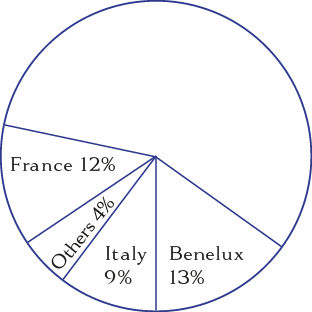
Worldwide Circulation: 87.628 Copies Readership: 394,326
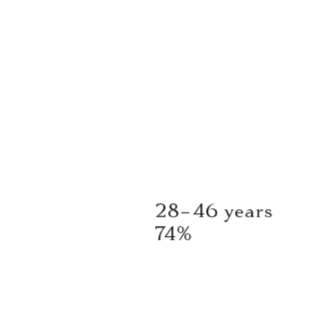
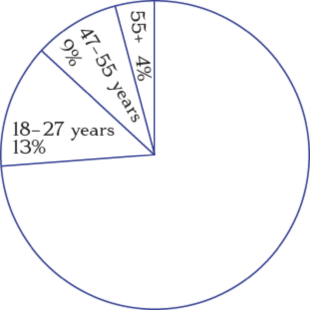
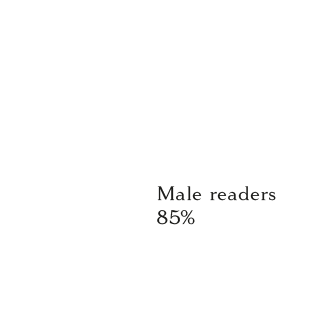
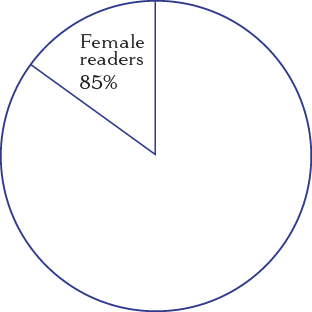
I can't disagree with you! But now we are talking about almost about the pilots of the industry, and what to do to the new magazine? How can he meet and make friends with major advertisers? Moreover, the first number is sometimes sold when there is still nothing to show.
At such moments, an element of trust is very important. And trust is people. People who make a magazine. Even in the crazy world of the Internet there is nothing more important than a person.
That is, be sure to make personal meetings and get acquainted.
Meetings are important, but do not forget that today every second considers itself a talent, but in fact there are only four or five talents. Everyone is trying to be like Katie, Jefferson and Olivier, but in the end, in independent public, few people except them live for more than 10-15 years. There are very few people like them.I'm lucky. I work with the best magazines out there and trust me, the element of credibility is a key ingredient in their commercial success. When Love launched, Katie and I went to meetings empty-handed. All we had was her vision and ideas, but people appreciate her and trust her a lot.
But there is also the giant Condé Nast behind your back. (Love magazine belongs to Сondé Nast. — Approx. ed.)
I will not deny that this helped us a lot, especially for me as an advertising seller.
So what about those who do not have the name Katy Grand or Condé Nast. Jump off a bridge?
You need to be clear about what you want to achieve. There are publications that can be called niche even among niche ones. If you have a very narrow focus, then you should do business differently.
Well, how, for example, did Hercules magazine start?
By the way, they are very trusted in the market. Behind them are special projects with Armani, Prada, Hugo Boss.
And how did they build it?
It takes time. Relationships are important, of course, but we work in an industry where the quality of the product you make is immediately obvious. Hercules launched when the Internet was still practically non-existent (in October 2006).
We went around knocking on doors and talking about how cool they are. They are precisely those rare talents that I spoke about above. Their vision, especially in the men's segment, is so modern that there are still few who can compare with them. A great example of two young guys who decided to start their own magazine – and they succeeded, and not in London or New York with a developed fashion and media industry, but in Barcelona.
Thanks to their talent and dedication, they quickly became prominent figures in the independent press. But you need to understand that there is a lot of work behind this. Only in appearance your magazine is fun and glamorous. This is very hard work.
From the Gentlewoman media kit
From the Gentlewoman media kit
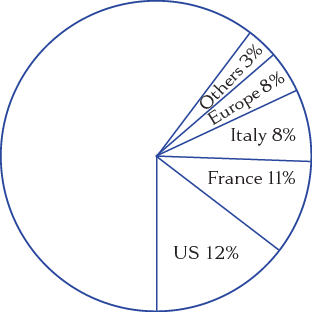
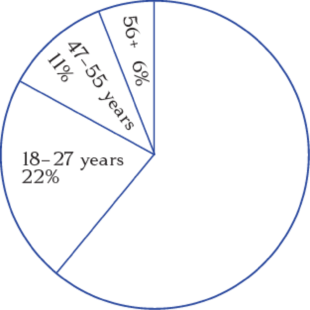


Worldwide circulation: 98,969 copies Readership: 445,361
Lyrics aside, do you believe that a small independent magazine can be financially successful these days?
I have several numbers of Fantastic Man, Gentlewoman, Hercules on my desk. SelfService and Purple magazines have been around for almost a quarter of a century. No one could afford to lose money for so long. Of course, in today's situation, you need to be a little smarter and faster than before. It is necessary to constantly learn and understand not only paper, but also video and social networks. The world has become more complex, but it also brings new opportunities. My answer: today it is quite possible to make a successful print magazine.
What advice can you give to the brave ones who are ready to take this on? What to pay attention to? You interact with brands a lot and you need to know what they are looking for the most.
They are looking for an original vision. And when the team has this vision and is confident in it, it should not make any compromises. Magazines that have successfully existed for 25 years go their own way – and nothing can push them from this path. Plus, most of the successful chief editors I know are the personification of their journals.If you talk to Katie, you will understand that she is Love. Just like Gert is Fantastic Man. You talk to him and imagine his journal. These people are an integral part of the product they make, and in an age of information overload, it is individuals who stand out against the background of information noise. These people are, to some extent, guardians of the portal in the community, which are attractive to this brand, because independent magazines are read by creative professionals, photographers, designers, and people of a certain warehouse and social status.
And a small circulation is not a hindrance to success?
When talking to brands about independent magazines, don't even start talking about numbers. It doesn't make much sense for the client or the magazine – it's better to leave this aspect out of the equation. A strong creative element and a unique vision are much more powerful than circulation. And there are a fairly large number of people for whom taste is much more important than numbers. This is exactly the case when it is worth looking at quality, not quantity.
But you see that advertising budgets are falling?
Not to admit it would be crazy. Not only have the budgets in general become smaller – some now go to the Internet or social networks. But! While advertising is falling for big magazines, advertising for good niche magazines is growing. If you have a cool, uncompromising vision, the client will make a choice in your favor. Yes, his budget has become smaller, but if you stand out from the crowd and make a cool original product, he will give it to you.
From the Love media kit
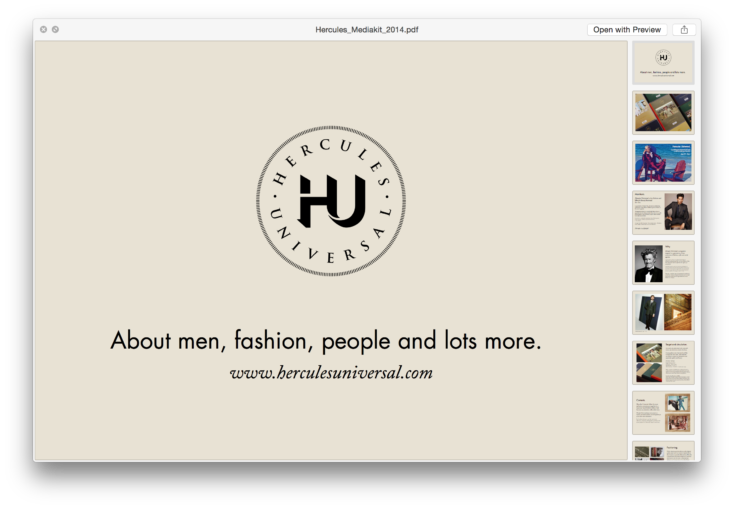

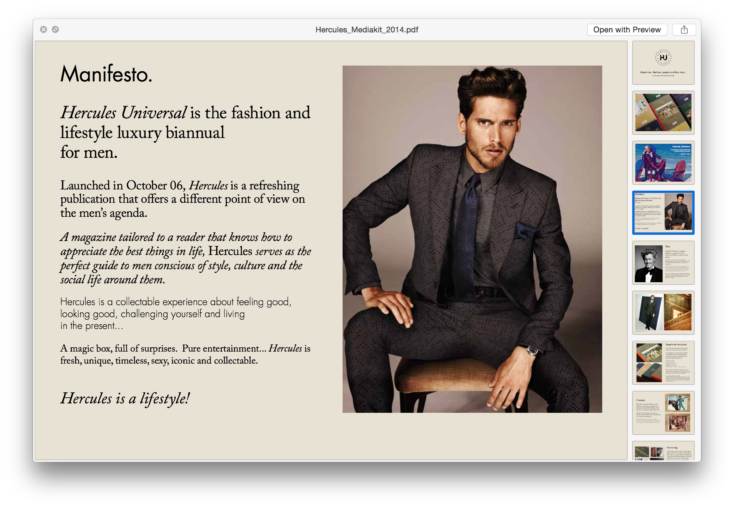
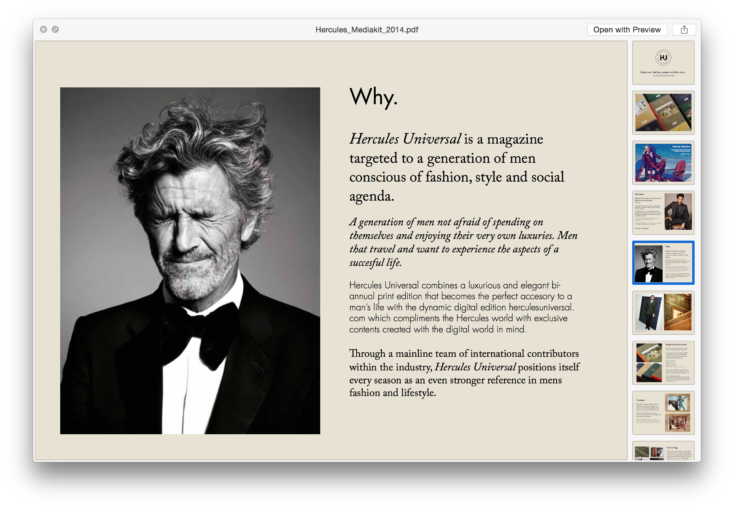
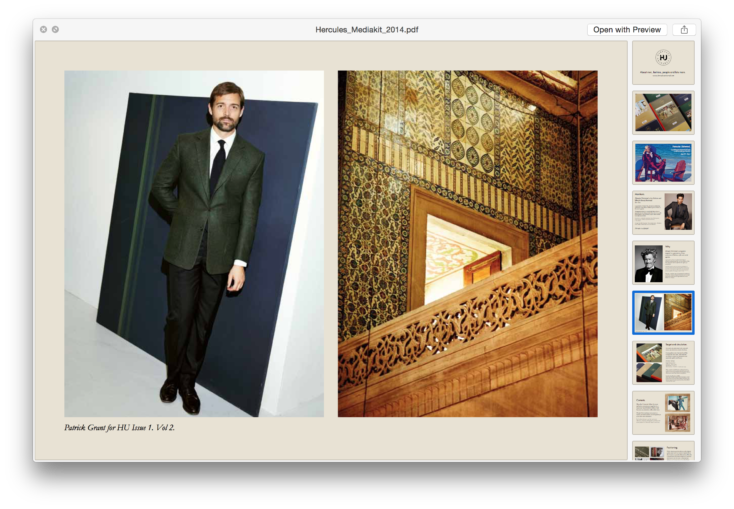
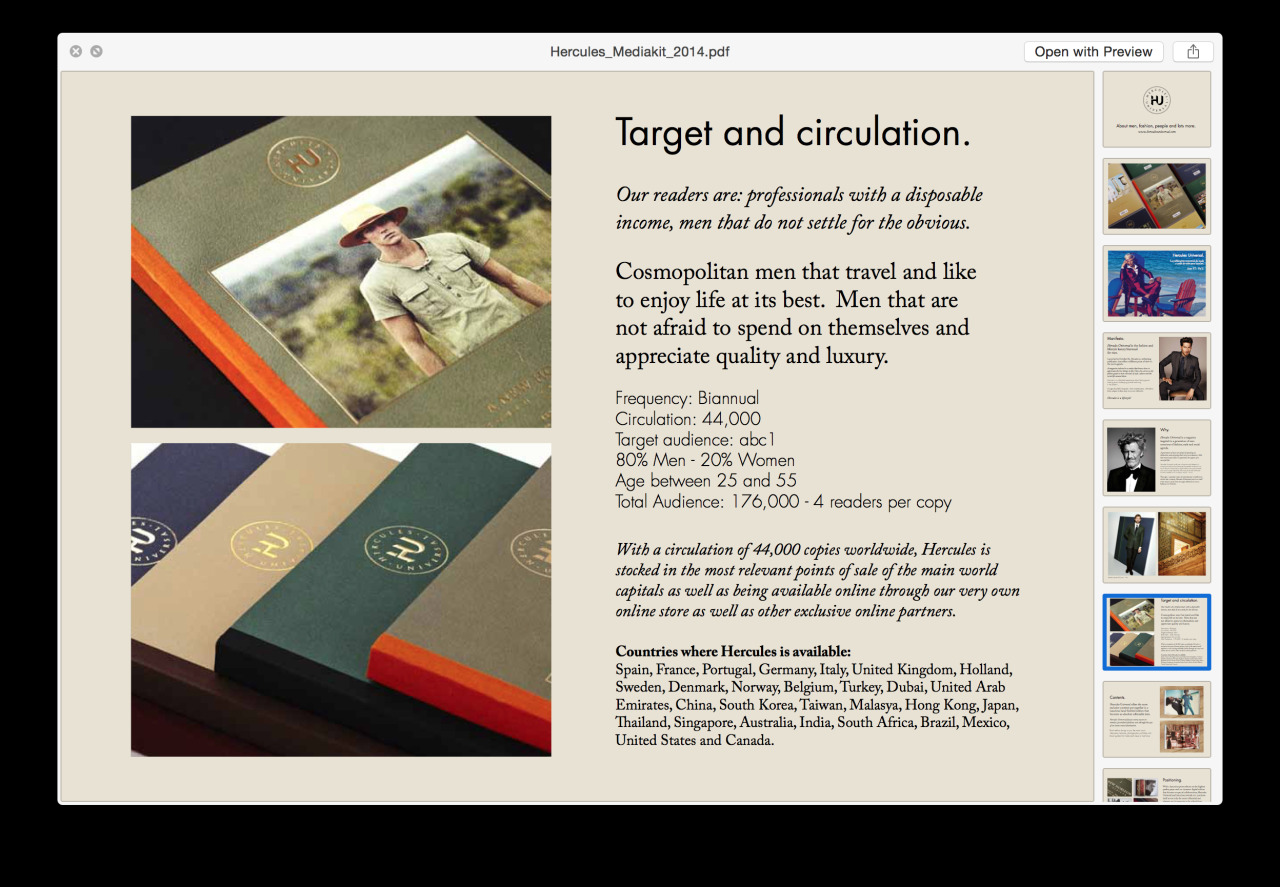
From the Hercules media kit


Konstantin Kotov is the founder of Lebigmag, the only distributor of niche foreign publications in Russia with a portfolio of more than 100 projects from around the world.
Tell us how Lebigmag started.
When I decided to bring foreign periodicals to Russia, I knew absolutely nothing about it. Previously, being engaged in journalism, photography and design, I had accumulated decent experience in creating a magazine and knew the whole process very well – from developing a publication concept to going to press, but distribution was a dark forest for me. And even more so, I knew nothing about foreign distribution. There was no one to ask, because no one seriously did this in Russia. There were no high-quality foreign periodicals in our country, and I felt that this was unfair.
Boldly! You must have run into problems right away. After all, we have a specific market – plus there are difficult moments, for example, customs.
Perhaps the most difficult, but also the most exciting activity was to establish contacts with European partners. For a couple of months of negotiations, my diplomacy skills have been pumped up to several levels, and even adjusted for national characteristics.
We agreed with the Dutch and Germans in the very first letter, with the Italians we discussed pasta, with the French of Putin, and many hours of telephone conversations with London were wasted – the British were delighted with the prospect of getting to Russia, but then did nothing.
The exception was the distribution director at Dazed Group, who even patted my enterprise in the main British press agency. He later started his own company and immediately wrote me down in Valbed Customers. Stuart, if you read these lines, know that in many ways, thanks to you, Russia is now reading good magazines!
Have you needed a lot of time to start trusting you?
After about six months, we formed a worthy pool of suppliers, Lebigmag appeared on the distribution lists on the sites of his favorite magazines, and we even began to receive letters from publications with which we had not yet worked. It was scary to feel like a significant player in the European market. We seriously made friends with some magazines – they sent each other gifts and postcards for the holidays. So in my collection was the very first issue of Berlin 032C and a number of magazines and Zinov with autographs of their authors.
Do readers get any pleasant bonuses?
We now and then bring as a gift posters and bags from our favorite magazines, and sometimes we get something scarce even by the standards of Europe. For example, last season we got the right to sell a limited circulation of Another holographic cover. A three -dimensional Karl Lagerfeld transfigns on it spectacularly performed by Rob Mandeus, a photographer who made the only voluminous portrait of the English queen. The magazine cost 75 pounds in London, and we were able to expose it at the same price, however, since then the British currency has lost somewhat in weight. Already now this number is sold on ebay for $ 150, and in a few years its cost can increase by an order of magnitude. Yes, this is a kind of investment, approximately like sneakers from Kanye West, only it is beautiful.
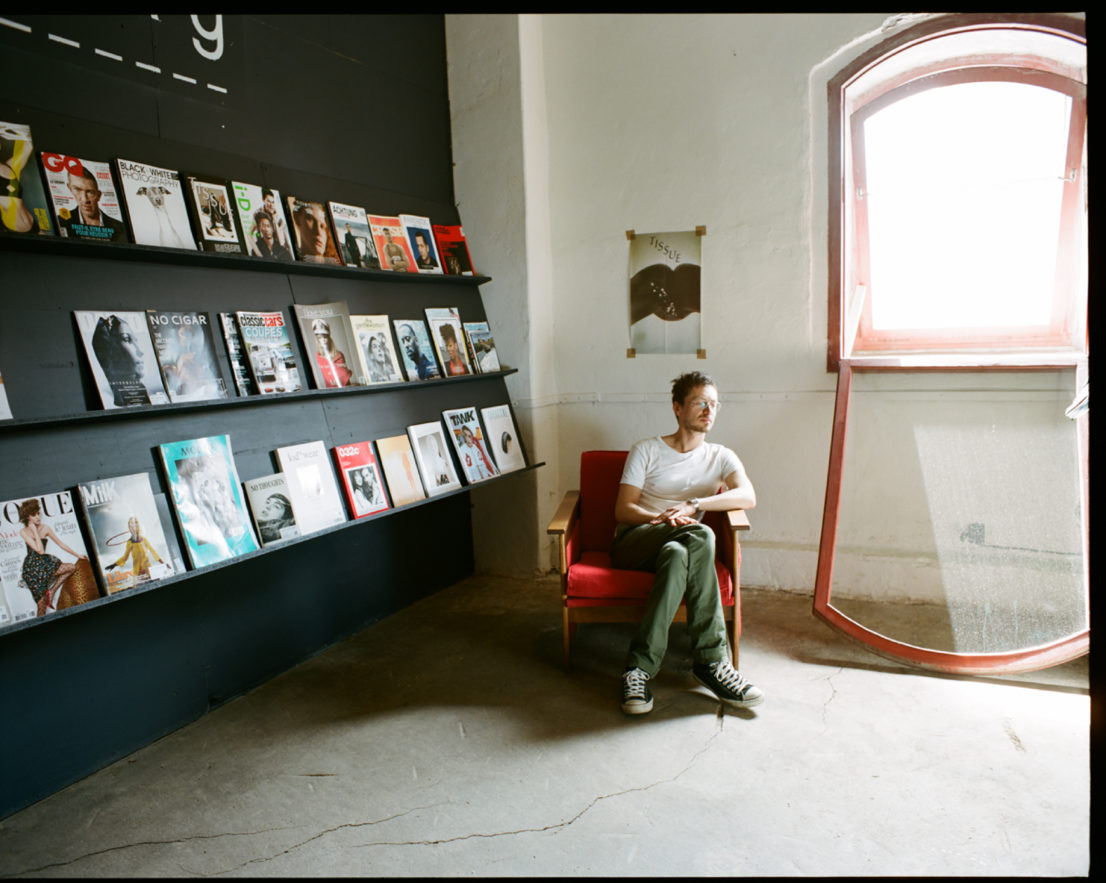
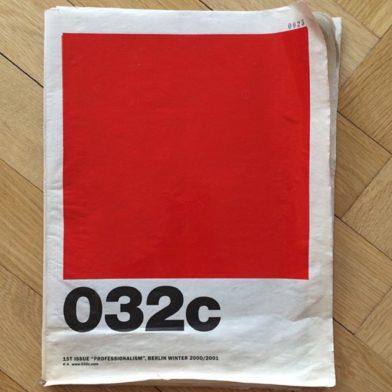
But not everyone can afford to pay so much for the magazine, especially since they are logically sold with a margin. Yes, and with the current course.
I raised the price of price from the very beginning. In Russia, where people are not used to paying more than 200 rubles for the magazine, it was not easy to convince the buyer that 20 euros can be given for a good independent publication. When the European currency doubled, it became even more difficult, although most of the assortment we retain the average European prices. Oddly enough, the cost of magazines is very different inside the European Union, and it turns out that in Russia they are cheaper to buy them in about half of the Western countries. There was even such a curiosity when the publisher asked me to raise the price, because with our modest margin the magazine cost less than in my homeland.
You sell dozens of different publications monthly. What is most in demand today?
The most popular segment was and remains fashion. To a lesser extent-Vogue and other monthly mass market, in the larger-high-quality thick magazines with a successful symbiosis of fashion and modern culture, like 032c, Gentlewoman, Fantastic Man, Pop, Purple Fashion, Arena Homme Plus, which come out twice a year . We try to pay attention to everything fresh.It happens that in the new edition a team from several successful old ones gathers, and then this is a bestseller from the first issue. So it was, for example, with System and Industrie.
How do you decide which publications to buy? Look at their popularity? Can a newcomer break into you?
We make an assortment depending on demand. But there is also a subjective factor. Sometimes we will hit something beautiful and not too well-known and then we are happy to read the reviews of customers prone to search for new masterpieces. In this sense, my personal favorites are magazines with a difficult fate of Modern Matter and Novembre.
In your opinion, people still buy magazines because they attracted the cover? Or is it atavism? Are there any nuances that make the cover by a commercial hit?
The cover is of great importance, but the last number of Another Man makes us think that this is a decisive factor. We sold a decent batch in three days, and our London supplier said that the magazine was over in three hours. All thanks to Harry Stiles, the former soloist of the popular British Bend Bend One Direction, which has just released the first single. For the three covers of the magazine he was captured by Ryan Mcginley, Alasder McLellan and Willy Wanderperre. Although all these are photographers of the first magnitude, their authorship does not guarantee high demand. So Harry produced the splash.
Today there is a lot of talk about the imminent end of the printed press. What do you think about it? There is some kind of decline in interest in magazines-or maybe the number of publications decreases?
Talks about the imminent death of print magazines seem to me naive. In the middle of the last century, the navigation and theater prophesied an ambulance, because everything was obsessed with television, and today, a decent audience is considered a bad tone. We still go to the cinema and theater, read ordinary books, although everyone now has all these entertainments on a mobile phone.
Even news newspapers continue to go out in the West with huge circulations. Look at Times or Frankfurter Allgemeine – these are thick daily issues, sometimes up to a hundred pages. And they stand decently-three or four euros. For urgent news, of course, we go to the Internet, and for leisurely reading – to a newspaper kiosk.
Nevertheless, it is not easy to buy an independent magazine in Russia, and there are almost no similar publications made with us at all.
Well, suppose you are not walking around in the Russian kiosk today. But in Europe, which we are one way or another, in any shop with the press you can find publications for every taste, including first -class independent magazines. And how many new season appears, I just do not have time to follow. Of course, you will not find any small-wide Zina in a random place, but throughout Europe there are a lot of shops similar to Lebigmag, with a carefully selected collection and a reverent attitude to their work. I do not have illusions about the general demand for magazines in our country.But I feel that the audience of connoisseurs and aesthetes is growing confidently, which means that soon places with high -quality periodicals will appear in every large city, and independent publications from Russia will be increasingly found in European stores.
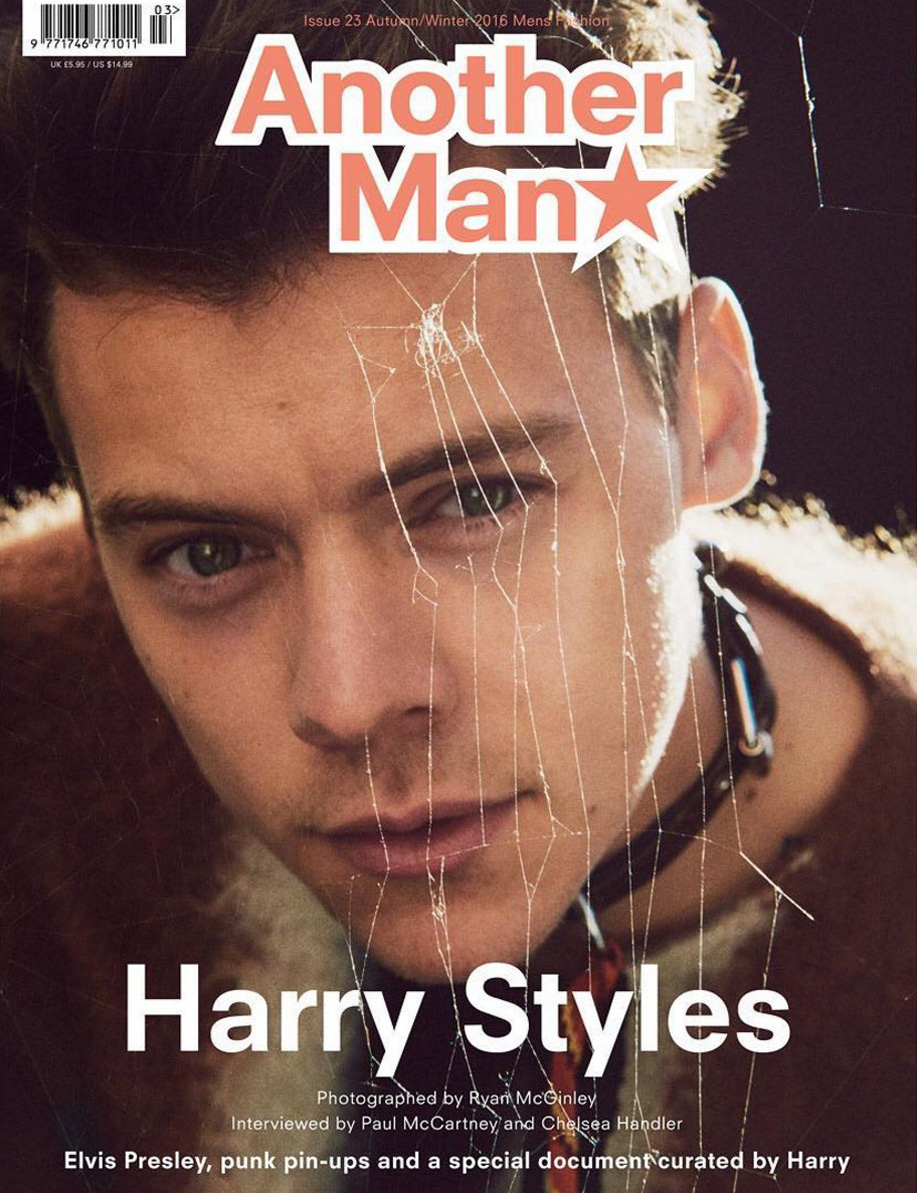

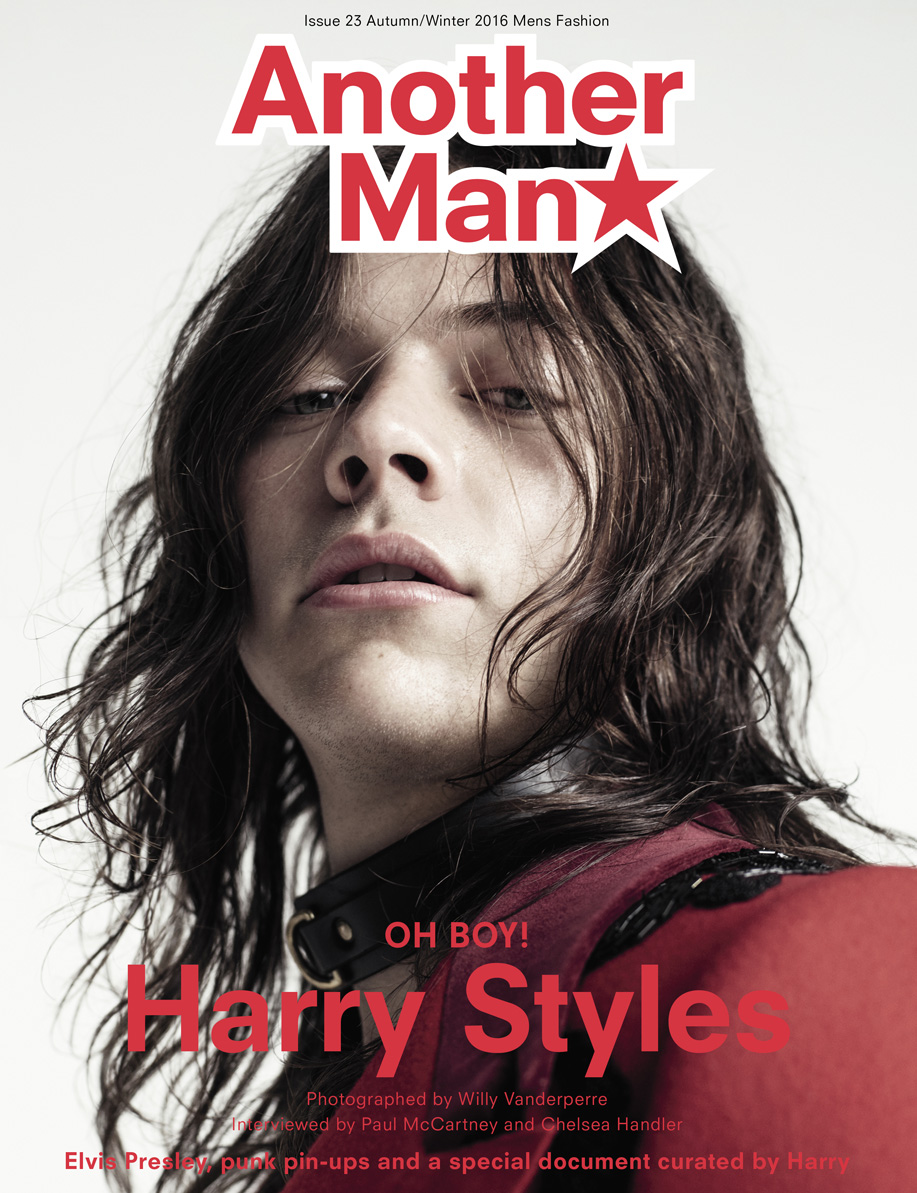


Magazine store. 0FR, Paris.
Alexander Tomrel is the founder of the 0FR store., The secret place of Parisians, where they do not hold the phone from the principle and where you can find not only the news of the press, but also new sources of inspiration.
To see the image, plunge on ▊
Alexander, tell me what is 0FR?
0FR is difficult to give one definition: this is a bookstore with new and independent press, where Parisians go for niche magazines, and art space, where literary readings, autograph sessions, launches of new magazines from all over the world, and exhibition of photographs are held every week. and concerts. 0FR is also an independent publishing house: for twenty years, together with my sister Marie, we have released more than 200 publications: guides, collections of poems, photo albums and, of course, newspapers and magazines.
For me, 0FR is a manifesto of freedom. In France, every serious structure, whether it is state railways or some well-known bank, believes that there should be an abbreviation in the name, it seems to them that this is status! For laughter, I came up with 0FR – zero francs. Only 15 years later, the idea occurred to me that these three symbols mean for me Open Free Ready – my store is absolutely independent (I never accepted money from sponsors, and I did not have an inheritance from my grandmother), I was opened for visitors for seven days in A week and never goes on vacation: here you can always meet either me or Marie.
Okay, but then where to get the money? How to maintain independence?
We sell magazines and books, including archival publications – for example, the first numbers of Egoïste ▊ or Purple ▊. In general, 0FR still exists, because someone still needs it. Why arrange literary readings if people no longer need poetry? As soon as they stop coming to us, we will end in magazines and gallery and begin to do something new, but be sure to be just as independent and free. But so far, according to our observations, readers' interest in magazines has never been the same as now.
And where in the store and gallery there are so many sandals?
We regularly do joint projects with young designers. This summer, to launch a book about Monsieur, which is walking around the world in sandals, we asked our friend, designer Speeds Nina Cristel (she works with Lemire and Saint Laurent) make a sandali line specifically for 0FR ▊. The quality is excellent, and the price is less than 100 euros! But this is a temporary action: as soon as we sell the last pair, we will come up with something new. For example, when we launched a Morocco guide, I brought dozens of real Moroccan carpets! Our customers love us, including for such interesting finds.
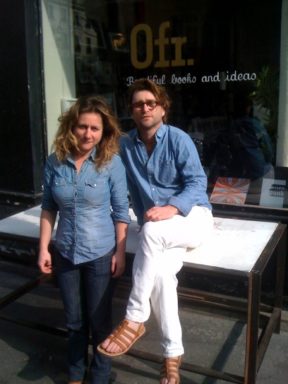

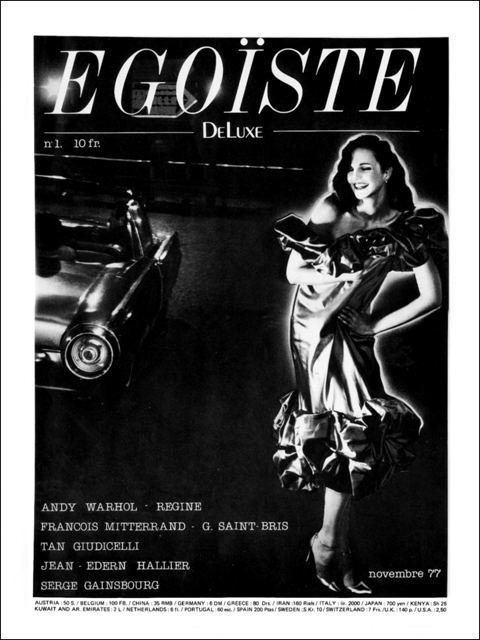
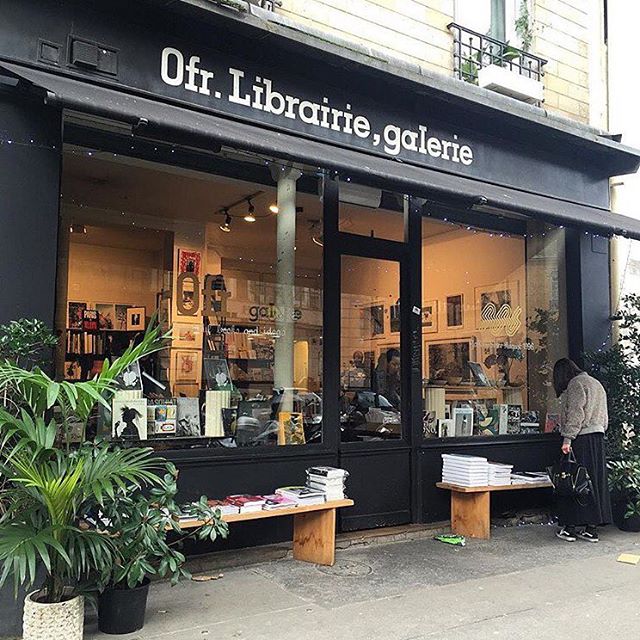

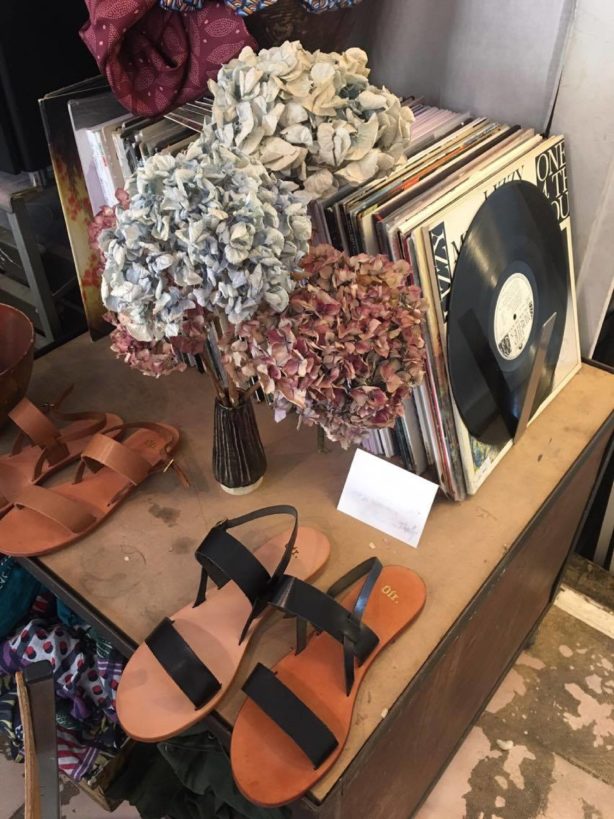
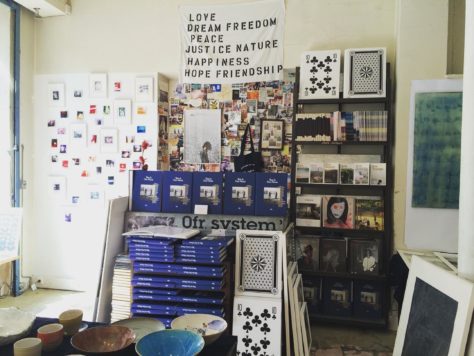
This year you are 20 years old. Tell me how it all started.
The founders of the magazine Les Inrockuptibles ▊ studied with me at the Lyceum, now this is a completely different project, insanely corrupt and not at all interesting, but then, at the very beginning, it was a cool magazine with great interviews. I saw how it was created, and I realized that it was not difficult. I thought, why shouldn't I do the same? So Marie and I started editing our own magazine, Prétexte, at home. Realizing that it had to be sold somewhere, and we absolutely did not want to depend on the owners of newsstands, we came up with a distribution network for it. We wanted to sell our magazine in cool places like museums, clothing stores like Kiliwatch, and music stores.
What happened to Prétexte, why did you stop publishing it?
Unfortunately, it did not work out with my own magazine, no one canceled the financial problems. But the main thing is that we still have our distribution network. In fact, it all started with Prétexte, he was our catalyst! It's not scary that he closed, the main thing is what he taught us. We did our best and were the first to bring Dazed Confused, The Face, i-D to France in the early nineties. We also helped make and distribute the first French niche fashion publications – Olivier Zamu Purple and Erze Petronio with Susan Keller Self Service ▊. Having opened 150 ephemeral points of sale around the world – in France, England, Germany, Singapore, Japan, Marie and I got a little tired and passed this business on to our followers. And they themselves decided to settle in their native Paris in order to concentrate on one thing, which, in fact, we did best: publish books, sell cool magazines and help young talents. 0fr has always been a gallery. Every week we open a new exhibition of a cool photographer or artist. Talents need help!
There are so many niche publications today. How do you choose what you will sell?
There is not a single item in 0fr that we don't like! We all choose as for ourselves, by intuition. When the new issue of The Plant comes out – it's a very beautiful niche plant magazine – and we will definitely put it in a prominent place, but this does not mean that we will have a separate section with plant magazines all year round. So the choice is subjective and constantly changing. Now we have books and magazines about fashion, architecture, photography, design, decor and philosophical topics! And recently, a small section of used books from the classics of French literature has appeared. Why not? I found them at a flea market and I sell them for a price lower than the secondhand booksellers on the embankments.


